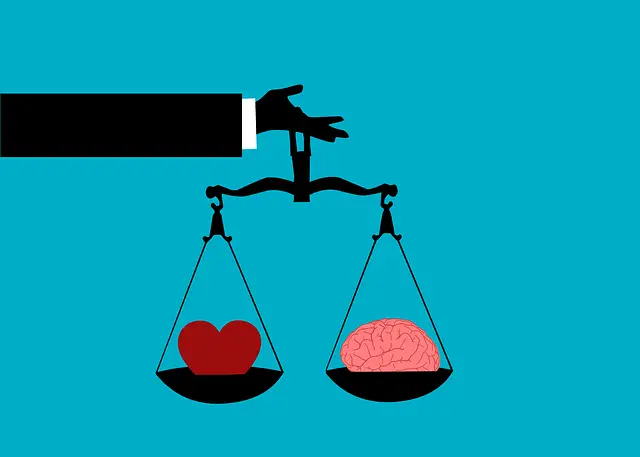Dogmatic and pragmatic approaches to life represent two distinct ways of responding to the world. Dogmatism is a form of thought that relies on rigidly held beliefs, while pragmatism takes a more flexible approach by examining problems from all angles before reaching a conclusion. Both approaches can be useful in different situations, depending on the desired outcome.
What is dogmatic?
(Image by kalhh from Pixabay )

There are a few different definitions of dogma, but in general, it refers to a belief or doctrine that is set forth as absolute truth, without any evidence or reasoning to support it. In other words, it’s something that someone just declares to be true, without any proof.
This can be contrasted with pragmatics which generally means being practical and down-to-earth. A pragmatic person is more interested in finding workable solutions than in sticking to ideals or theories.
So when we talk about someone being dogmatic, we mean they’re blindly clinging to their beliefs, even in the face of evidence contradicting them. On the other hand, a pragmatic person is more open-minded and willing to change their beliefs if it turns out that they’re wrong.
What is pragmatic?
Pragmatic denotes a practical approach to problems and affairs. A pragmatic person is someone who is sensible and realistic, and who deals with things in a practical way. They are not concerned with theoretical or idealistic approaches, but instead focus on what will work in the real world.
The difference between dogmatic and pragmatic
(Image by Mohamed Hassan from Pixabay )

Dogmatic and pragmatic are two approaches that can be taken in many situations. A dogmatic approach is one where you hold firm to your beliefs and don’t waver, while a pragmatic approach is one where you are willing to compromise or change your beliefs if it means getting a desired outcome.
There are many areas in life where both approaches can be taken, such as in religion, politics, or personal relationships. In general, a dogmatic approach is seen as inflexible and close-minded, while a pragmatic approach is seen as being more flexible and open-minded.
The two approaches can also be applied to different aspects of your life. For example, you may have a dogmatic approach to your religious beliefs but be pragmatic in your political views. Or you may be dogmatic about your personal values but pragmatic when it comes to your career.
Ultimately, the best approach to take depends on the situation and what you’re trying to achieve. There are benefits and drawbacks to both approaches, so it’s important to weigh up the pros and cons before deciding which one to take.
What are the advantages and disadvantages of being pragmatic?
Advantages of being pragmatic:
- Effective problem-solving: Pragmatic individuals tend to focus on finding practical solutions to problems rather than getting bogged down in theoretical or abstract concepts.
- Flexibility: Pragmatism allows individuals to adapt to changing circumstances and adjust their approach accordingly.
- Realistic: Pragmatic individuals have a realistic approach to situations, which can help them make decisions that are grounded in reality.
- Goal-oriented: Pragmatic individuals tend to be goal-oriented, which can help them stay focused on achieving their objectives.
- Efficient: Pragmatic individuals tend to be efficient in their decision-making and problem-solving, which can save time and resources.
Disadvantages of being pragmatic:
- Lack of idealism: Pragmatism often prioritizes practicality over idealism, which can lead to a lack of consideration for ethical or moral values.
- Short-sightedness: Pragmatic individuals may focus too much on short-term solutions and fail to consider the long-term implications of their decisions.
- Resistance to change: Pragmatism can lead individuals to resist change and stick with familiar approaches, even when they may not be the most effective or efficient.
- Over-reliance on data: Pragmatic individuals may rely too heavily on data and facts, and fail to consider the emotional or subjective aspects of a situation.
- Lack of creativity: Pragmatism can discourage creativity or innovative thinking, as individuals may default to tried-and-true solutions rather than exploring new approaches.
Overall, being pragmatic can be advantageous in many situations, but it is important to balance practicality with other factors, such as ethics, long-term planning, and creativity.
What are the advantages and disadvantages of being dogmatic?
Advantages of being dogmatic:
- Certainty: Dogmatic individuals have a strong sense of certainty and conviction in their beliefs, which can provide them with a sense of security and purpose.
- Clarity: Dogmatic individuals tend to have clear and well-defined beliefs and values, which can help them make decisions and navigate complex situations.
- Confidence: Dogmatic individuals tend to be confident in their beliefs, which can make them persuasive and effective communicators.
- Stability: Dogmatic individuals may provide stability and consistency in their beliefs and actions, which can be reassuring to others.
- Unity: Dogmatic beliefs can bring people together and create a sense of unity and shared purpose within a group.
Disadvantages of being dogmatic:
- Closed-mindedness: Dogmatic individuals may be unwilling or unable to consider alternative perspectives or evidence that contradicts their beliefs, leading to a lack of intellectual curiosity and growth.
- Intolerance: Dogmatic individuals may be intolerant of those who do not share their beliefs, leading to conflict and division within groups and communities.
- Rigidity: Dogmatic beliefs can lead to rigid thinking and inflexibility, making it difficult to adapt to new information or changing circumstances.
- Prejudice: Dogmatic beliefs can be based on prejudice or bias, leading to discrimination and harmful actions towards certain groups or individuals.
- Lack of critical thinking: Dogmatic individuals may rely on their beliefs as a substitute for critical thinking, leading to poor decision-making and irrational behavior.
Overall, while dogmatism may provide individuals with a sense of certainty and purpose, it can also lead to closed-mindedness, intolerance, and other negative outcomes. It is important to balance conviction with openness to new ideas and evidence, and to consider the potential impacts of our beliefs and actions on others.
What are the characteristics of a pragmatic person?
A pragmatic person is someone who is practical and down-to-earth. They are not concerned with theoretical or idealistic concepts. Instead, they focus on what is realistic and tangible. Pragmatic people are also often described as being sensible, level-headed, and reasonable. They are able to see both sides of every issue and make decisions based on what is best for the situation, rather than their own personal beliefs.
What are the characteristics of a dogmatic person?
A dogmatic person is someone who is excessively opinionated and inflexible, and who refuses to consider other points of view. They are often described as being close-minded or bigoted. Dogmatic people tend to be very confident in their beliefs and opinions, and are often not open to change or new ideas.
What are examples of being pragmatic?
Being pragmatic involves taking a practical and realistic approach to problem-solving and decision-making, prioritizing effectiveness and efficiency over theoretical or abstract concepts. Examples of being pragmatic might include a business leader who is willing to adjust their strategies based on changing market conditions, a doctor who chooses the most effective treatment option for their patient rather than sticking to a traditional approach, or a government official who implements policies that have been proven to work in other regions or countries. Pragmatic individuals may also be willing to compromise and find common ground with others in order to achieve their goals, and may prioritize solutions that have a tangible impact on people’s lives over those that are more ideologically or politically motivated. In general, being pragmatic involves a willingness to adapt to changing circumstances, a focus on real-world results, and a recognition of the importance of practicality and effectiveness in achieving one’s goals.
What are examples of being dogmatic?
Being dogmatic involves holding rigid beliefs and being unwilling to consider alternative viewpoints or evidence. Examples of being dogmatic might include a religious fundamentalist who believes their interpretation of scripture is the only valid one, a political extremist who refuses to listen to opposing perspectives, or a conspiracy theorist who dismisses all evidence that contradicts their beliefs. Dogmatic individuals may also be intolerant of those who do not share their beliefs, and may view anyone who disagrees with them as being morally or intellectually inferior. In extreme cases, dogmatic beliefs can lead to harmful actions towards individuals or groups who are seen as being outside of the dogmatic worldview. In general, being dogmatic involves a lack of openness to new ideas and evidence, a rigid adherence to a particular set of beliefs, and a tendency to view the world in black-and-white terms.








